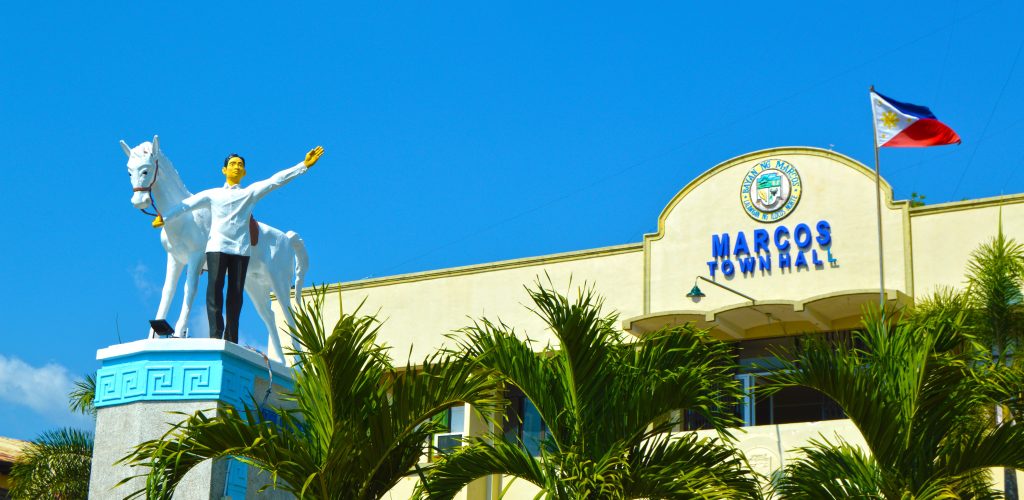
Etymology and Creation of the Town
Unlike other communities with interesting legends as to how their respective names evolved, that the Municipality of Marcos is simple. The town, named after Don Mariano Marcos (the father of Ferdinand E. Marcos, 10th President of the Republic of the Philippines), created by virtue of Republic Act 3753. This law was sponsored by then Congressman Simeon M. Valdez and approved on June 22, 1963.
Socio-Economic-Political and Administrative Development
As one of the Ilocano towns, the socio-economic traits of its residents are identical and typically Ilocano. They are industrious, frugal, protective, visionaries and clannish.
Even in the early times, their houses made of bamboo and cogon were built and compactly arranged in elevated terrain to give them an ideal vantage ground from which to scan the surrounding area for approaching enemies. This trait is exemplified by the choice of the location of the municipal compound. Also, historical records show that the early inhabitants were the “second wave” of Malay immigrants who were better civilized than the earlier settlers. The latter were believed to have come from the Malay Peninsula “bancas” or “balangays”. Each of this balangays settled in certain places and was governed by the wealthiest and strongest among them. The descendants of these Malay migrant called “Tinguians” assimilated in their culture, their pagan beliefs and traditions are notably clear with their belief in many gods like the sun and earth. These influences are evident up to this time when the elders of the places still exclaim “Apo Init” and “Apo Bulan”.
Since 1751, the Municipality of Marcos, then part of the municipality of Dingras was under Spanish Rule until 1900. After which, during the American Regime, a period of development and relative progress ensued. Schools were established in barrios (now barangays) and roads constructed facilitated travel. Infrastructure projects were completed.
Political and Administrative Development
Originally, the Municipality of Marcos was comprised of seven (7) barangays, namely Alabaan, Agunit, Capariaan, Culao, Biding, Escoda and Ragas which were formally separated from the Municipality of Dingras its mother town, on September 11, 1963. Subsequently, the name of Ragas was changed to Tabucbuc; Culao to Elizabeth; Biding to Valdez; Capariaan to Imelda and Agunit to Pacifico. The name Escoda was retained. For political expediency and better administration, the area of Barangay Alabaan and portions from other barangays were consolidated and subdivided into six (6) now Barangays Daquioag, Fortuna, Ferdinand, Mabuti, Lydia and Santiago. The 13th barangay is Cacafean, likewise from the municipality of Dingras the inclusion of which was affirmed by the Sangguniang Panlalawigan of Ilocos Norte per Resolution No.45 Series of 1984.
The Municipality of Marcos has a total land area of 7,277 hectares, based on Cad 575-D. However, as per records in the municipality the actual land area of Marcos is 9,933 hectares. There is also an additional Land area of 14,766.6 hectares included in Case 17, Cad 712-D of Nueva Era Cadastre. Said area is subject to Boundary Dispute between Marcos, Dingras and Nueva Era.
